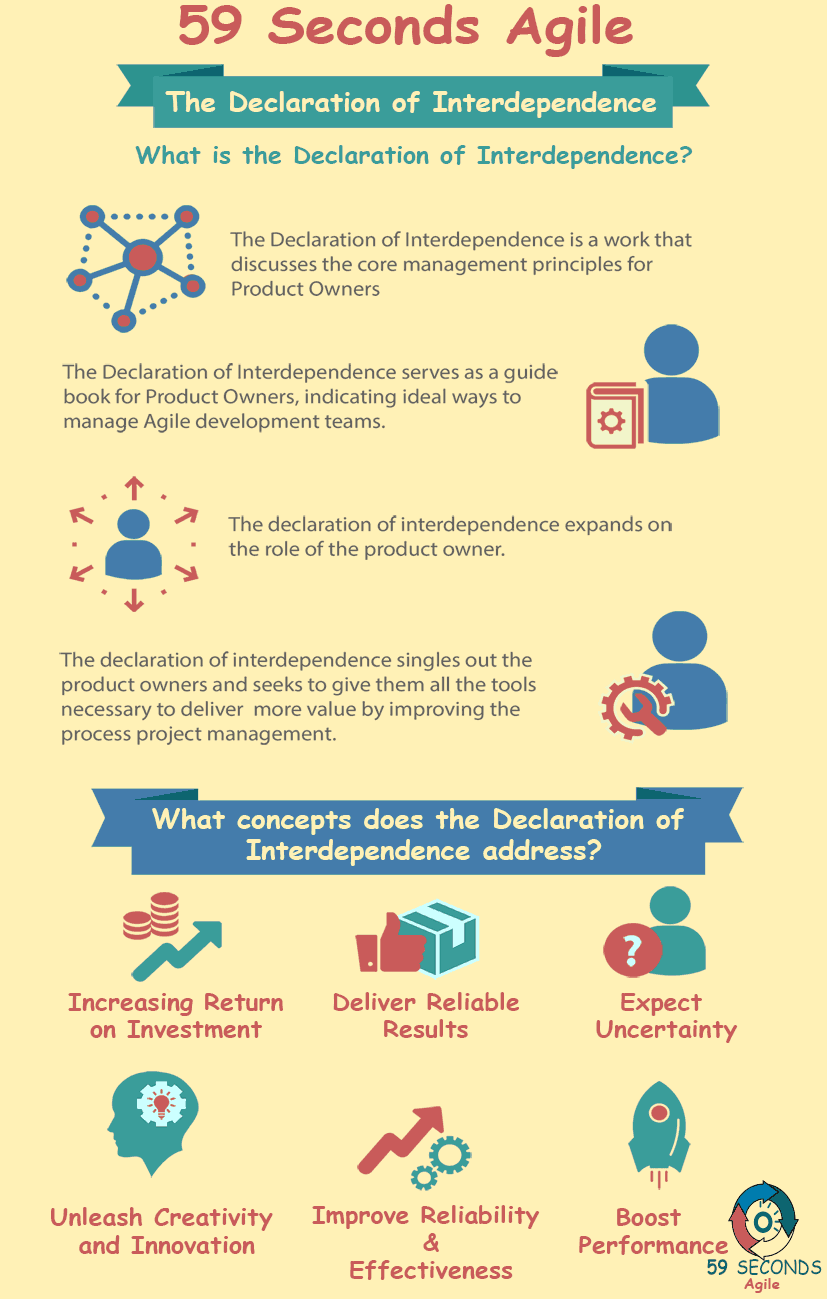What is the Declaration of Interdependence and how does the declaration impact the Development Team? This section of the article looks at section 5 and 6 of the declaration.
The Agile Scrum Declaration of Interdependence
A 59 Seconds Agile Video Animation
The Agile Scrum Declaration of Interdependence for Developers – Part 2
Scrum Declaration of Interdependence – Section 5
The fifth belief in the document says, “We boost performance through group accountability for results and shared responsibility for team effectiveness.” Traditional development usually has a policy of every man for himself. If one specific developer falls behind, other developers are often hesitant to sacrifice their own efficiency and waste time helping.
In Agile software development, teams all share the load. If a feature runs behind schedule and fails to make it into a release, the entire team shares this failure. This encourages every member of the team to reach out and help each other to keep the entire project on pace. As with the iterations of Agile, group accountability means developers and other roles rely on each other to do their work, and communicate problems before they slow the project down.
Scrum Declaration of Interdependence – Section 6
The sixth and final item of the document states that “we improve effectiveness and reliability through situationally specific strategies, processes, and practices.” A major downfall of traditional development is the one size fits all mentality. Most projects are treated with the same strategies, when tailored practices may work better for certain projects.
With Agile, adaptation takes priority over sticking to a plan. Each new project requires research, and teams take the best course of action for that specific project. This adaptation depends on the experience of each team member. The best way to create a strategy is to get feedback from each role on the team. With every role represented, each future project has more information available and can be approached with a better strategy. For developers specifically, this means being transparent about what went well or poorly in previous projects and sprints, in order to ensure that future projects take the most effective practices.
In addition to the Agile Manifesto and the principles of Agile software development, the Declaration of Interdependence gives some core beliefs of Agile. The specifics of this document discuss how different roles and parts of Agile development rely on each other. This increased interdependence equips teams to work more efficiently and create software more quickly.
Prev <— Continue Reading —> Next
Learn More: Agile Declaration of Interdependence
User Stories Applied
A 59 Seconds Agile Book Review
User Stories Applied by Mike Cohn is one of our favourite books on Agile User Stories. The book starts with an overview into user stories, and details what a user story is and the different aspects of them. He then discusses how to go about writing a user story, and provides details of the INVEST criteria that can be used to determine if the story is meeting all of its objectives. Next Mike gives an in depth discussion of who user stories are written for and where to begin when gathering the details for them. The book then discusses acceptance testing user stories, including how to go about specifying these criteria and the responsibilities of the development team and customers during this process.
Prev <— Continue Reading —> Next
Learn More: Agile Declaration of Interdependence
Learn More
Agile Project Management Training Courses
The Declaration of Interdependence
A 59 Seconds Agile Infographic

Prev <— Continue Reading —> Next
Learn More: Agile Declaration of Interdependence
Our Favourite Agile Books
We found these books great for finding out more information on Agile Scrum:

